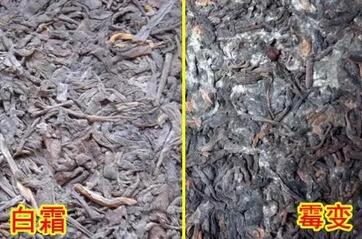Moldy tea is harmful to health and should not be consumed, as we all know. However, some tea enthusiasts find it difficult to distinguish between moldy tea, 'Golden Flowers', and 'White Frost'. What exactly are the differences between moldy tea and 'Golden Flowers' or 'White Frost'?
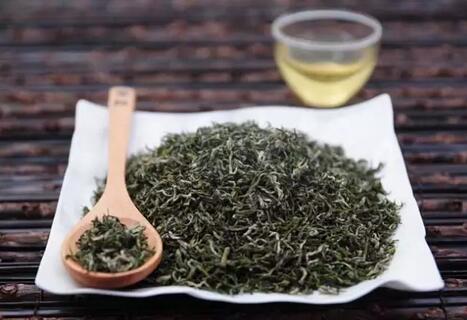
Moldy Tea
Tea mold generally refers to white hairs growing on the tea leaves, accompanied by a musty smell. Severely moldy tea may clump together and develop green hairs, while Pu-erh tea may show black mold. However, some premium varieties like Biluochun, Mao Feng, Yunwu tea, Dian Hong, Tuo tea, and Pu-erh naturally have white fuzz due to their tender leaves, not mold.
Chen Zongmao, an academician of the Chinese Academy of Engineering and researcher at the Tea Research Institute of the Chinese Academy of Agricultural Sciences, explains that tea mold is caused by contamination from Penicillium and Aspergillus, which can produce toxins like aflatoxin (classified as a Group 1 carcinogen by the WHO, a highly toxic substance). Aflatoxin is heat-resistant and cannot be eliminated through high-temperature cooking. It damages liver tissue and can lead to liver cancer or even death. Consuming moldy tea may cause dizziness, diarrhea, or other food poisoning symptoms, and in severe cases, damage vital organs like the liver and kidneys. Therefore, moldy or spoiled tea should not be consumed.
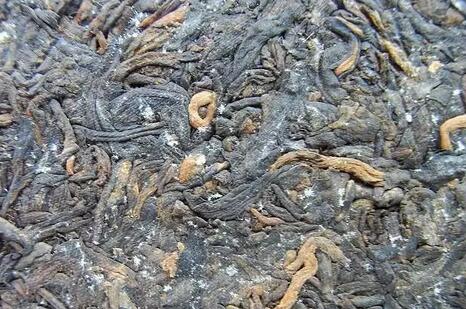
'Golden Flowers'
'Golden Flowers' are a key feature in the processing of Fu brick tea (a type of dark tea), forming the unique quality of the tea. By controlling specific technical parameters, the growth of the beneficial fungus Eurotium cristatum is encouraged, producing golden closed sacs, commonly called 'Golden Flowers'. The more 'Golden Flowers' in Fu brick tea, the better its quality, as the saying goes, 'Good tea grows golden flowers; golden flowers mean good tea.'
The color of 'Golden Flowers' in Fu brick tea changes over time: newly baked Fu brick tea has abundant golden particles resembling 'Milan'. As the tea ages, the 'Golden Flowers' gradually shrink and turn white. Some very old Fu brick tea may no longer show visible 'Golden Flowers', only faint white spots. Thus, new tea may have lush 'Golden Flowers', while older tea may have fewer or none visible.
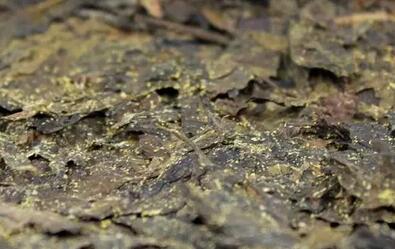
'White Frost'
'White Frost' refers to white, mold-like marks on the surface of tea cakes, a natural result of Pu-erh tea fermentation.
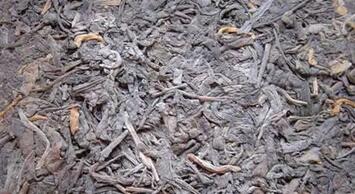
How to Distinguish Between Moldy Tea, 'Golden Flowers', and 'White Frost'?
Aspergillus can also appear as yellow flakes and, under artificial conditions, may resemble 'Golden Flowers', making it hard to distinguish. The best way is to observe the appearance: mold grows in filamentous clusters, appearing yellow, usually concentrated in one corner of the tea cake. Within 14 to 21 days, mold can cover an area of 4cm to 6cm, standing 0.5cm to 1cm high. The tea itself becomes sticky, with unclear leaf boundaries and a dark color. If moldy tea is dried and stored, the mold shrinks, appearing irregular and brown.
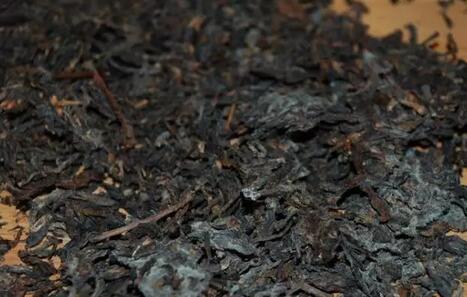
In contrast, 'Golden Flowers' usually appear inside the tea cake or brick as granular golden dots. On the surface, there may be a few clusters, but each 'Golden Flower' is distinct. When brewed, the differences are clear: moldy tea yields a dark or brownish-black, murky liquor with a strong musty smell, remaining cloudy even after 4-5 infusions. Tea with 'Golden Flowers' tastes smoother, with a sweet aroma unique to 'Golden Flowers', producing a bright red liquor that remains clear and flavorful over many infusions.
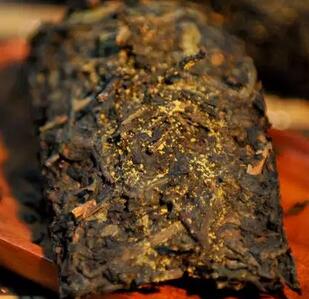
'White Frost' and white mold are also hard to distinguish at first glance. The key difference is that 'White Frost' only appears on the surface of the tea cake. If the cake is opened and white substances are found inside, accompanied by a strong musty smell or smoke when separated, it is likely moldy tea, not aged Pu-erh.
